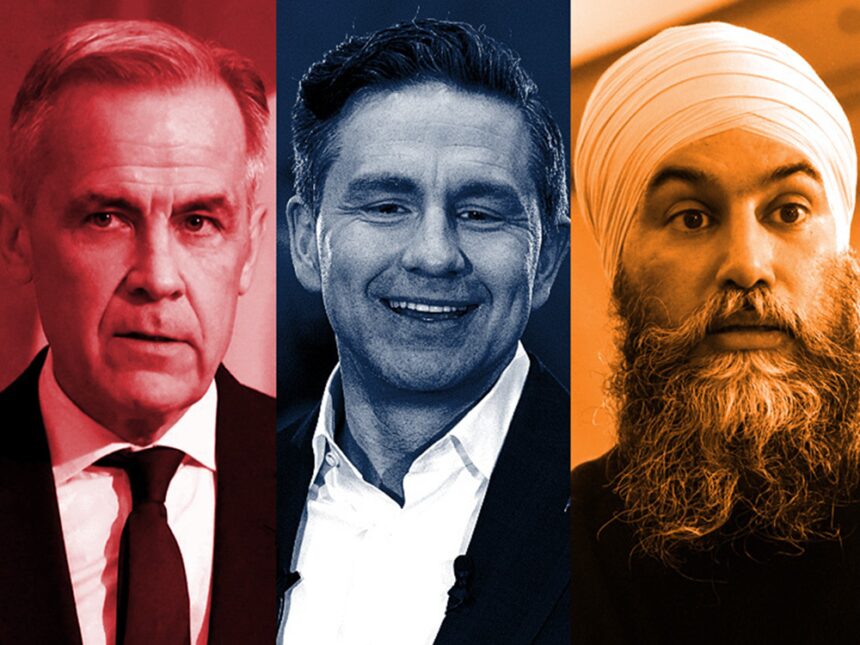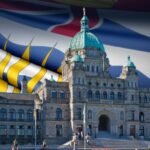Canada Federal Election: Key Facts
Carney, Poilievre, Singh on Election Day
As Canadians head to the polls today in what analysts are calling the most consequential federal election in decades, three figures stand at the center of the national conversation: Conservative leader Pierre Poilievre, NDP leader Jagmeet Singh, and Liberal heavyweight Mark Carney. Their contrasting visions for Canada’s future have dominated a campaign marked by economic anxiety and calls for change.
Pierre Poilievre’s Campaign
Pierre Poilievre has masterfully channeled widespread frustration over housing affordability and inflation into what polls suggest could be a Conservative victory. His campaign’s central message—that Canadians are experiencing a “cost of living crisis” requiring dramatic government downsizing—has resonated with voters across traditional party lines. “Canadians don’t just want a new government,” Poilievre told supporters at his final rally. “They demand a complete reset of how Ottawa operates.”
Mark Carney’s Role with the Liberals
The Liberal campaign, meanwhile, has increasingly positioned former Bank of Canada governor Mark Carney as their economic heavyweight. Though not leading the party, Carney’s presence has been unmistakable as the Liberals attempt to counter Poilievre’s economic messaging. “Conservative policies would trigger austerity that Canada cannot afford during global economic uncertainty,” Carney warned during a key CO24 Business interview last week, articulating the Liberal case that experience trumps populism in managing Canada’s economy.
Jagmeet Singh’s Strategy
NDP leader Jagmeet Singh has fought to maintain relevance as the election increasingly became a two-way contest. His platform of expanded healthcare coverage and affordable housing initiatives has appealed to progressive voters concerned about Canada’s social safety net. “While the other parties argue about who gets to manage our broken systems,” Singh said, “we’re offering fundamental change that puts ordinary Canadians first.”
Key Battlegrounds
Electoral analysts are watching key battlegrounds in suburban Ontario and Quebec, where Liberal support has eroded significantly compared to previous elections. Dr. Elaine Thompson, political scientist at the University of Toronto, told CO24 Politics, “The suburbs around Toronto and Montreal will determine whether Poilievre wins a majority or if we’re looking at a minority government situation where Singh’s NDP could hold considerable influence.”
Economic and International Context
Economic concerns have dominated this election cycle, with 68% of voters citing affordability as their top issue according to the latest Angus Reid poll. Housing costs have risen 22% nationally since the last election, while food inflation remains stubbornly high at 6.4% year-over-year. These figures have provided fertile ground for Poilievre’s message that governmental mismanagement is directly responsible for economic hardship.
The international context has also shaped the campaign, with Canada’s relationship with the United States and China receiving significant attention. Poilievre has pledged a tougher stance toward Beijing, while the Liberals have emphasized their experience navigating complex international relationships. According to CO24 News diplomatic correspondent interviews, foreign policy establishments in Washington and European capitals are watching the results closely, concerned about potential shifts in Canada’s international positioning.
Conclusion
As polling stations close tonight from Newfoundland to British Columbia, Canadians face a fundamental question about their country’s direction: Will they embrace Poilievre’s promise of radical governmental reform, trust in the Liberal establishment’s experience led by figures like Carney, or seek the progressive alternatives offered by Singh? In a deeply divided electorate, can any leader truly deliver the national unity needed to address Canada’s mounting challenges?


















